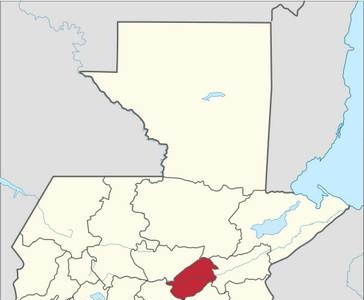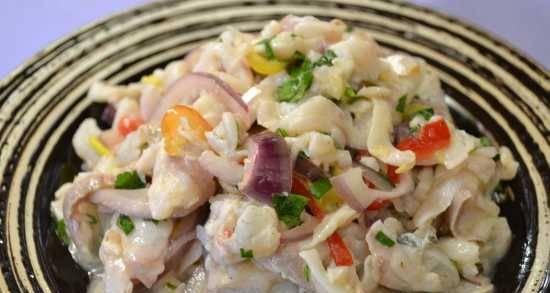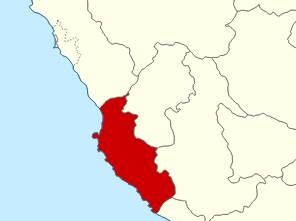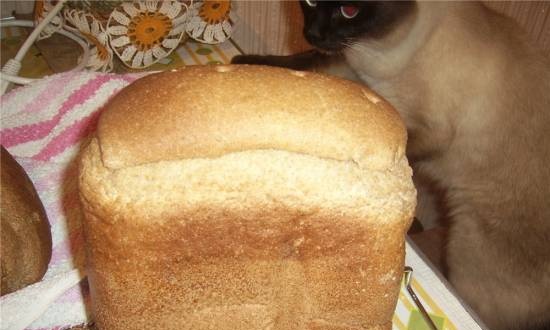|
 The Chiquimula Department is known in Guatemala as the "Pearl of the Orient". It is located on the border with El Salvador and Honduras in a fairly arid but fertile area, where the population consists of mestizos and the Chorti ethnic group, which emerged from the Mayan people. The Chiquimula Department is known in Guatemala as the "Pearl of the Orient". It is located on the border with El Salvador and Honduras in a fairly arid but fertile area, where the population consists of mestizos and the Chorti ethnic group, which emerged from the Mayan people.
Since ancient times, the basis of food for these Indians was several varieties of corn, beans and pumpkins, which were cultivated on milpah plantations. Over time, rice, sugar cane, potatoes, cucumbers, various types of bananas and fruits have been added to the agricultural products consumed. The inhabitants of Chikimula practically do not keep livestock, and they get meat and fish as a result of hunting and fishing, or they buy it at the market.
One of the cooking methods in traditional regional cuisine is to fry or bake in a wide, very low rimmed ceramic pan called a komal. In komal, set over an open fire, thin fresh corn tortillas and cakes totoposte - from corn flour with honey and sugar, hardening as it cools. They can dry and fry in the same dish. meat and fish for later use in other dishes.
 The second method includes boiling and stewing - this is how soups, stews, stews with vegetables are prepared. Among other recipes, boiled cassava with pieces of pork fried in lard with the skin is very typical. (yuca con chicharrones)... For serving the dish, a salad of fresh vegetables and a simple sauce of boiled tomatoes and cilantro are used. Red beans stewed with green mango pieces are called zorrillo... This stew is cooked in an earthen pot, has a distinctive texture from crunchy fruits and soft beans, and is seasoned with aromatic herbs, including Mexican tea. The second method includes boiling and stewing - this is how soups, stews, stews with vegetables are prepared. Among other recipes, boiled cassava with pieces of pork fried in lard with the skin is very typical. (yuca con chicharrones)... For serving the dish, a salad of fresh vegetables and a simple sauce of boiled tomatoes and cilantro are used. Red beans stewed with green mango pieces are called zorrillo... This stew is cooked in an earthen pot, has a distinctive texture from crunchy fruits and soft beans, and is seasoned with aromatic herbs, including Mexican tea.
The ancient Indian cooking technique is preserved to this day in the leaves of various plants, including corn and banana, - tamales... Holidays and Saturday evenings are characterized by "Red" (tamales colorados) - in banana leaves stuffed with corn mass with pieces of meat, a strip of red hot pepper and olive, tinted with tomato paste. Black tamales (tamales negros) have a more exotic taste, as their filling contains tomatoes, corn, chocolate, ground pumpkin seeds, pork fat, chili, sesame and cinnamon.
Another ancient technique is roasting or reheating food over hot coals without using any utensils. This is how they usually heat totopostte cakes, or bake corn cobs, pumpkins, some fruits and unopened chamedorea or pacaya inflorescences, which serve as an addition to stewed vegetables. Pacaya flowers can also be eaten in salads as a vegetable or fried in batter and served with tomato sauce.
The residents of Chikimula prepare the main drinks on the basis of corn:
• atole whole-grain maize flour, brown sugar, cocoa, cinnamon, anise, or other aromatic spices;
• chilate from corn with pepper, ginger and cocoa;
• ambassador (pozol) corn and cocoa, served in a traditional calabash hikara bowl;
• chicha from fermented corn kernels with pineapple peel or orange juice.
Elena
|
 The Chiquimula Department is known in Guatemala as the "Pearl of the Orient". It is located on the border with El Salvador and Honduras in a fairly arid but fertile area, where the population consists of mestizos and the Chorti ethnic group, which emerged from the Mayan people.
The Chiquimula Department is known in Guatemala as the "Pearl of the Orient". It is located on the border with El Salvador and Honduras in a fairly arid but fertile area, where the population consists of mestizos and the Chorti ethnic group, which emerged from the Mayan people.









